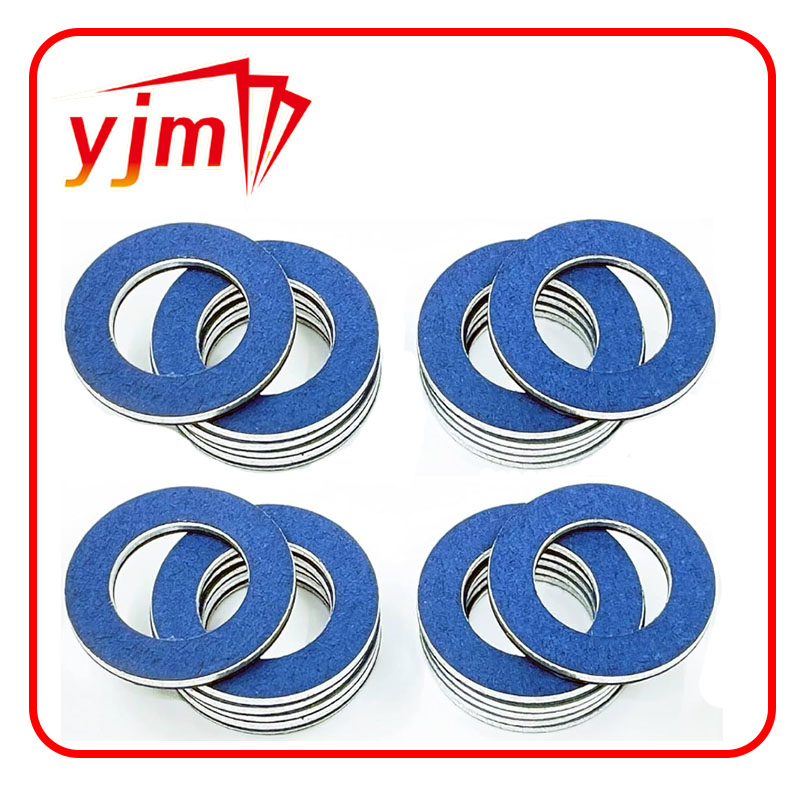Understanding Oil Seal Functionality in Power Steering Systems for Optimal Performance
Understanding Oil Seal Application in Power Steering Systems
The power steering system has become a fundamental component of modern vehicles, enhancing driver control and comfort by reducing the effort needed to steer. At the heart of this system is the oil seal, an often-overlooked component that plays a vital role in maintaining system integrity and performance. This article delves into the significance of oil seals in power steering systems, their types, functions, and the factors that influence their longevity.
The Role of Oil Seals in Power Steering
Oil seals, also known as shaft seals or rotary seals, are designed to prevent fluid leakage and contamination from external elements. In power steering systems, which typically use hydraulic fluid to enhance steering response, oil seals accomplish two main tasks
1. Sealing Hydraulic Fluid Oil seals prevent the hydraulic fluid within the steering system from escaping. This is crucial because a drop in fluid levels can lead to a loss of power assist, making it increasingly difficult for the driver to maneuver the vehicle.
2. Contamination Prevention Oil seals also keep contaminants, such as dirt, dust, and moisture, from entering the hydraulic system. Such debris can compromise the fluid's properties and damage sensitive components, leading to reduced system efficiency and potentially costly repairs.
Types of Oil Seals
Various types of oil seals are used in power steering systems, each designed to meet specific requirements based on operating conditions
- Rubber Oil Seals These are the most common type of oil seals used in power steering systems. Rubber offers excellent elastic properties and resistance to heat, making it ideal for ensuring a tight seal while allowing for some movement.
- Lip Type Seals Designed with a lip that contacts the shaft, lip seals provide a reliable barrier against fluid leaks. They are especially effective in high-pressure applications, making them a favorable choice for power steering systems.
- Spring-Loaded Seals These seals incorporate a spring mechanism that provides additional pressure against the sealing lip. This design helps maintain a consistent seal under varying operational conditions, ensuring effective performance over time.
Factors Affecting Seal Longevity
oil seal power steering

While oil seals are engineered for durability, several factors can influence their lifespan and effectiveness
1. Temperature Extremes The operating temperature of the power steering fluid can significantly affect the oil seal's performance. High temperatures can cause rubber to harden and crack, while low temperatures can lead to stiffening, reducing its sealing capability.
2. Fluid Compatibility The type of hydraulic fluid used can affect the longevity of oil seals. Fluids that are corrosive or incompatible with the seal material can lead to degradation, resulting in leaks or seal failure.
3. Contamination Exposure to dirt and debris can wear down oil seals over time. Regular maintenance of the power steering system, including fluid replacement and system cleaning, can help mitigate this issue.
4. Installation Quality Proper installation is crucial for the performance of oil seals. Incorrect installation can lead to misalignment, increasing wear and potentially causing premature failure.
Maintenance and Replacement
To ensure the longevity and functionality of the power steering system, regular inspections and maintenance are essential. Signs that an oil seal may need replacement include
- Unexplained fluid leaks around the steering system. - Difficulty steering or increased effort required by the driver. - Unusual noises coming from the power steering pump.
When replacing oil seals, it is crucial to choose high-quality components that are compatible with the vehicle's specifications. A professional mechanic or technician should perform the maintenance to ensure proper installation and operation.
Conclusion
Oil seals are a critical component of power steering systems, playing a pivotal role in preventing leaks and protecting against contaminants. Understanding their function, types, and factors influencing their longevity can help vehicle owners appreciate their importance and advocate for regular maintenance. By ensuring that these components are in good condition, drivers can enjoy the seamless steering experience that modern vehicles are designed to provide, thus enhancing safety and driving comfort on the road. Investing in quality oil seals and adhering to maintenance schedules not only prolongs the life of the steering system but also contributes to overall vehicle performance.
-
Understanding the Front Main Engine Seal: Purpose, Maintenance, and Installation
News Jul.29,2025
-
Understanding O-Rings and Seal Rings: Types, Applications, and Custom Solutions
News Jul.29,2025
-
Understanding Crankshaft Oil Seals: Rear Seals, Pulley Seals, and Their Role in Engine Integrity
News Jul.29,2025
-
The Importance of Front and Rear Crankshaft Seals in Engine Performance and Oil Management
News Jul.29,2025
-
Crank Oil Seals: Functions, Types, and Cost Considerations in Engine Maintenance
News Jul.29,2025
-
A Comprehensive Guide to O-Rings and Seals: Types, Materials, and Global Applications
News Jul.29,2025
-
Mastering Diesel and Performance Engine Maintenance: A Guide to Critical Oil Gaskets
News Jul.28,2025
Products categories















